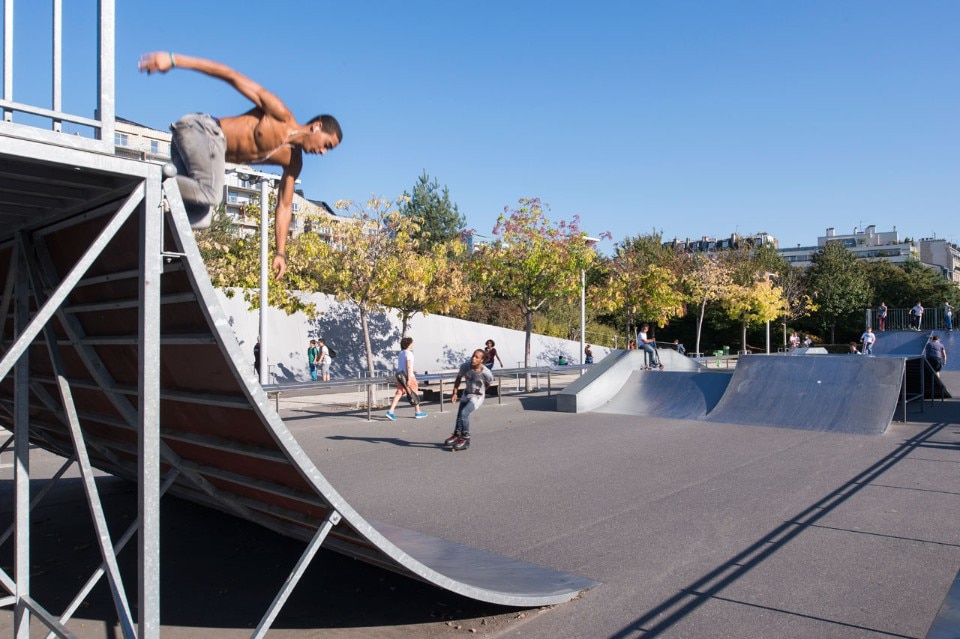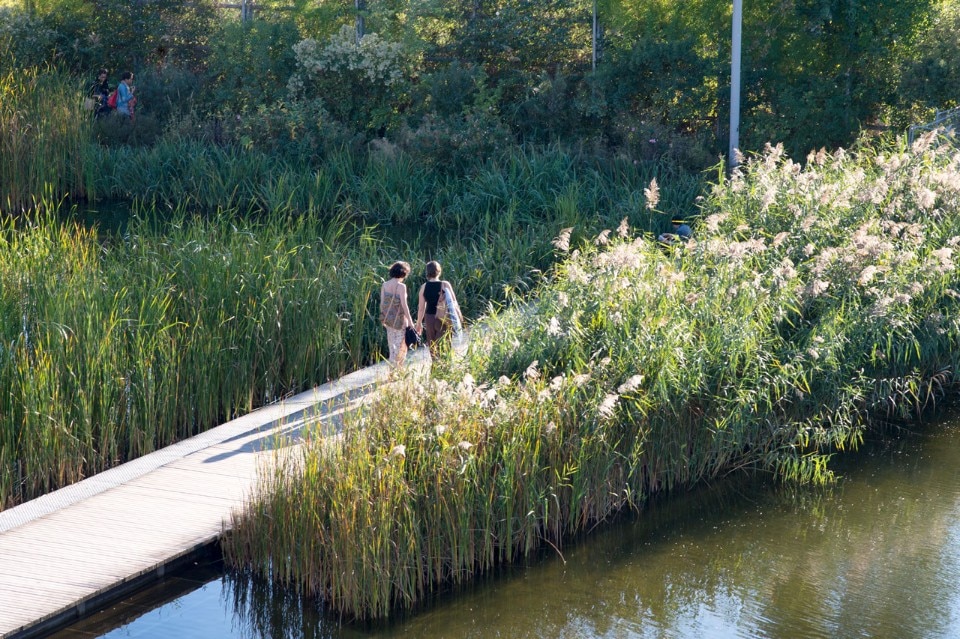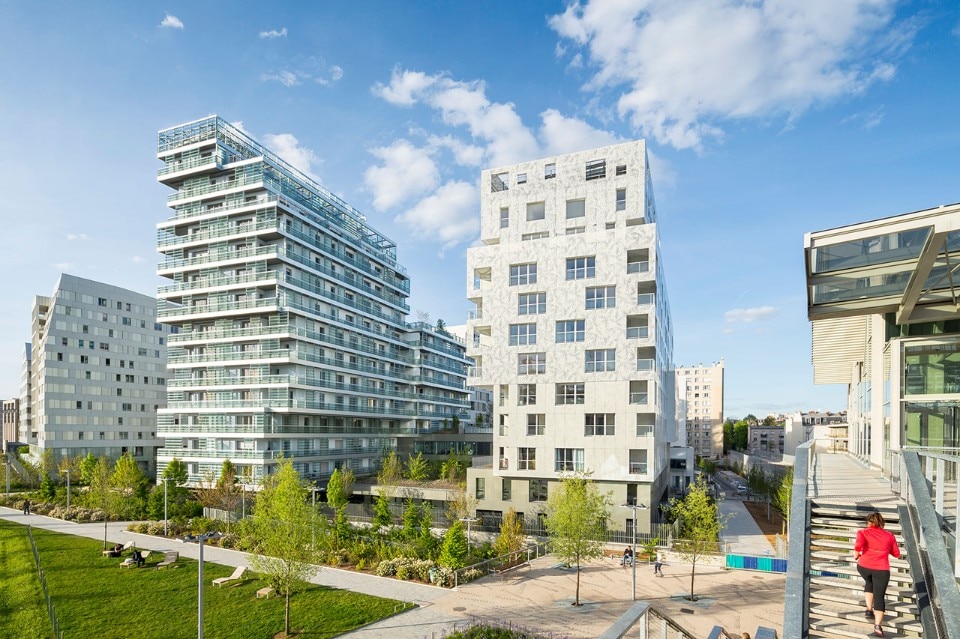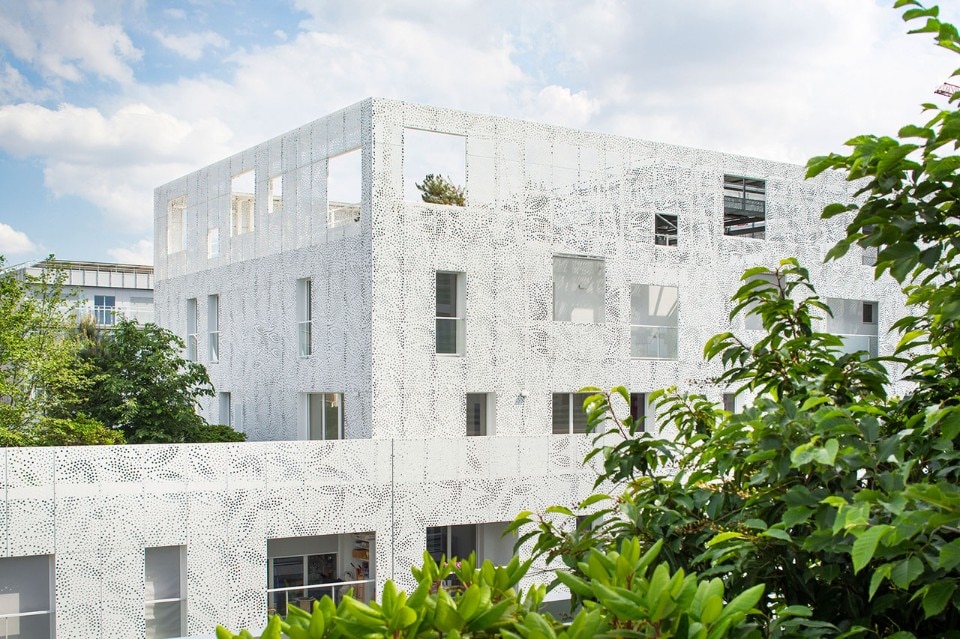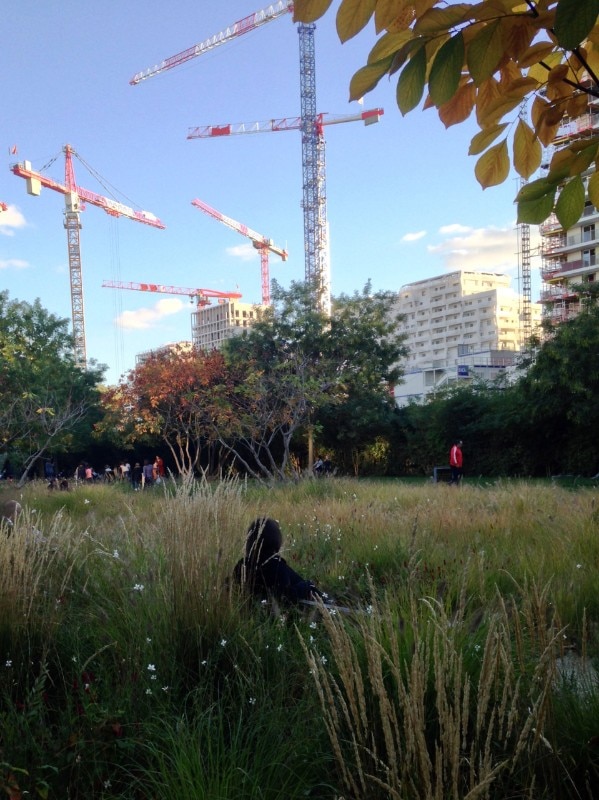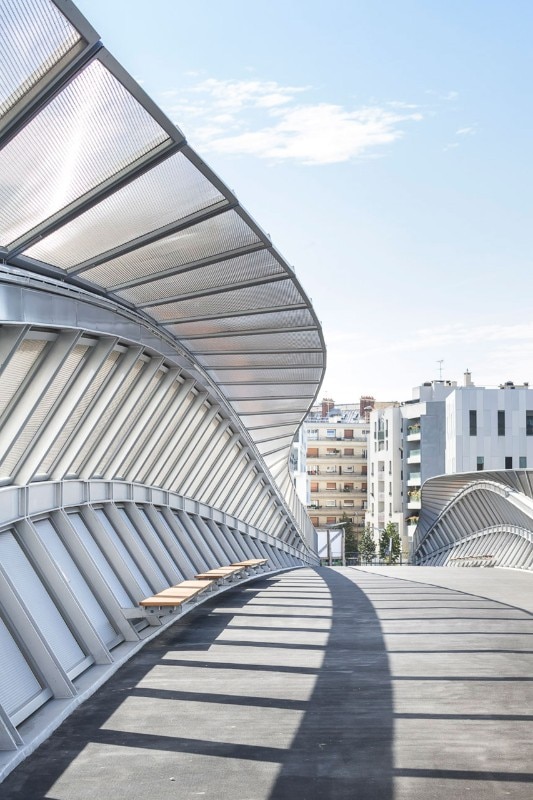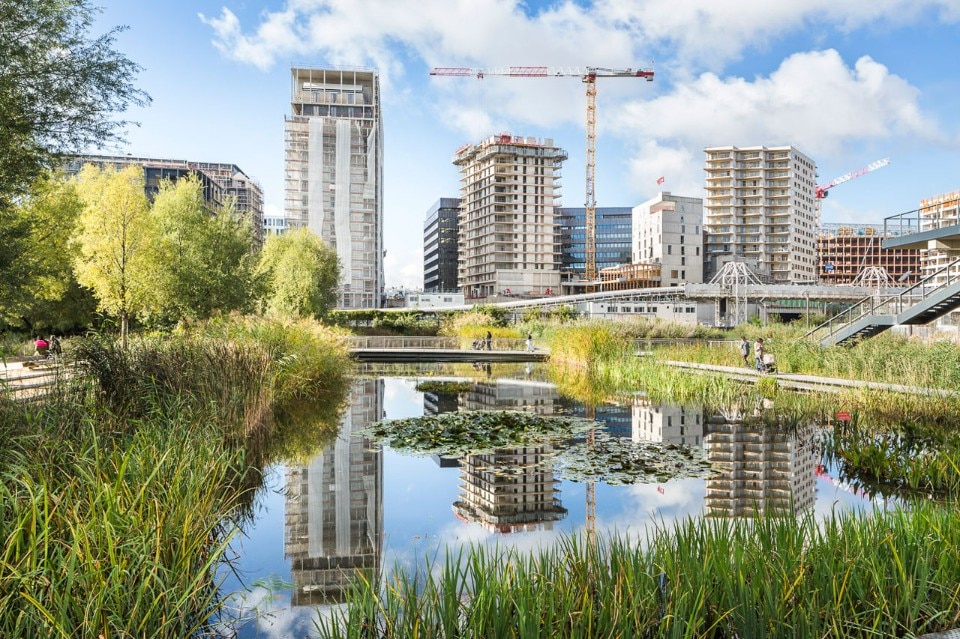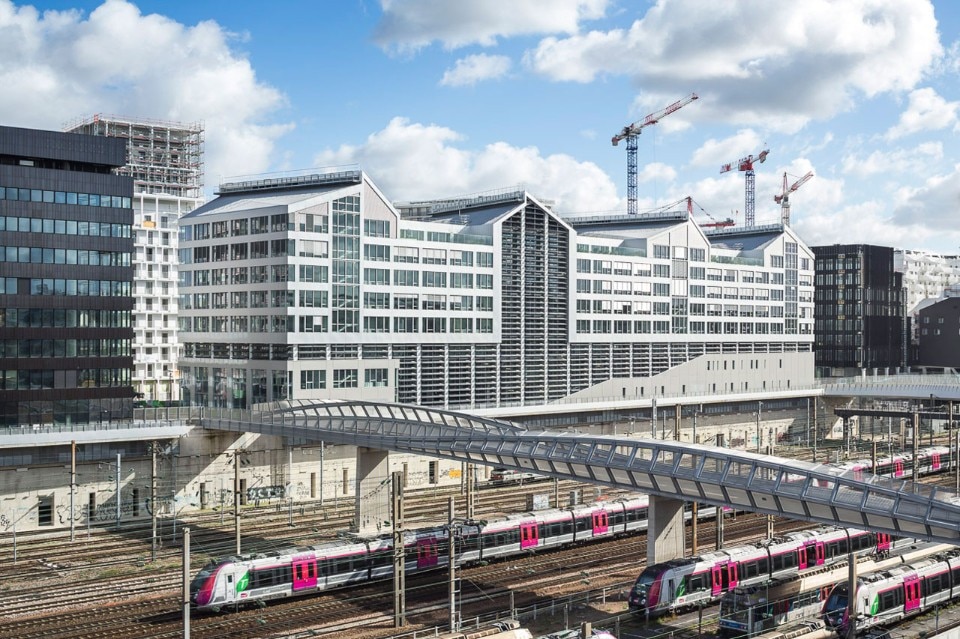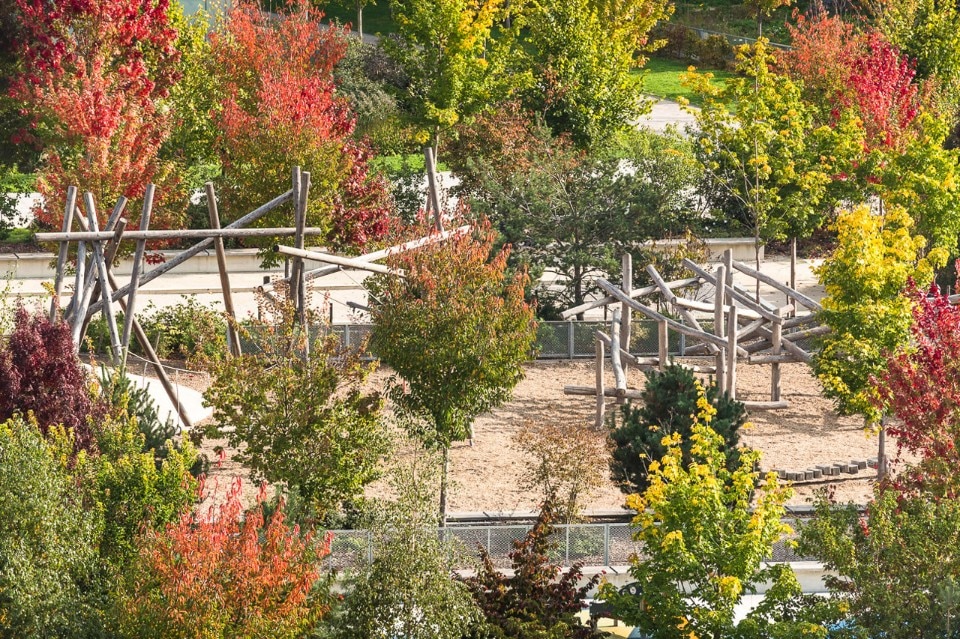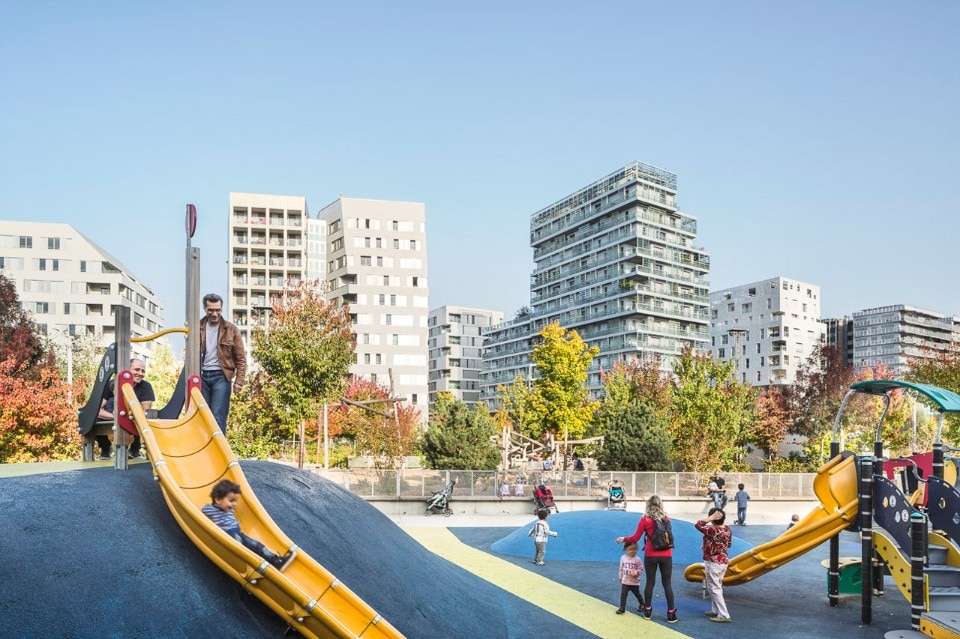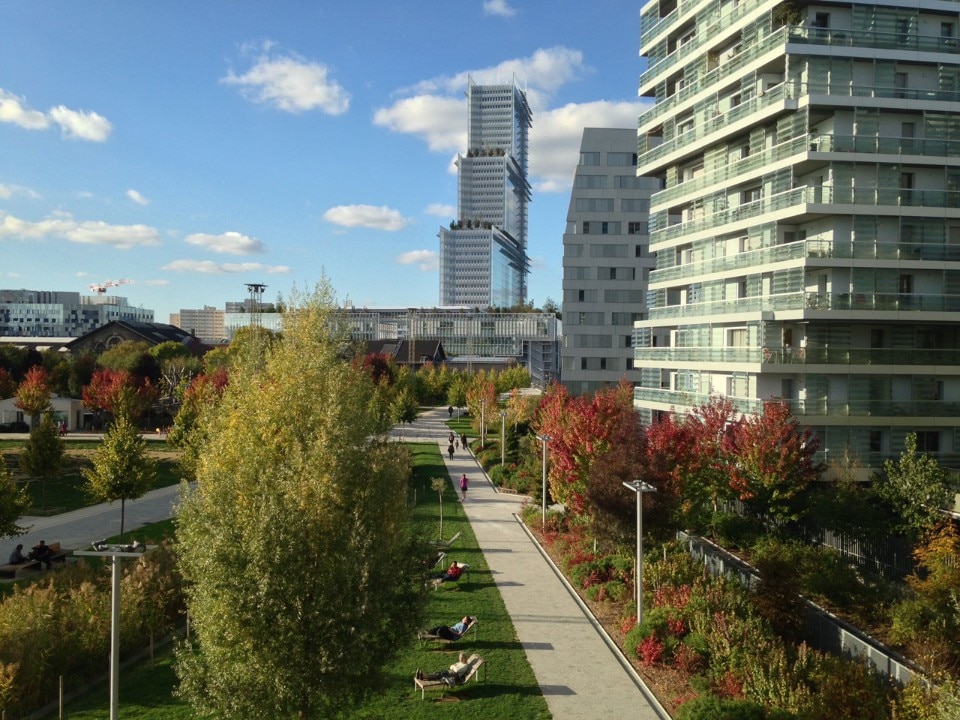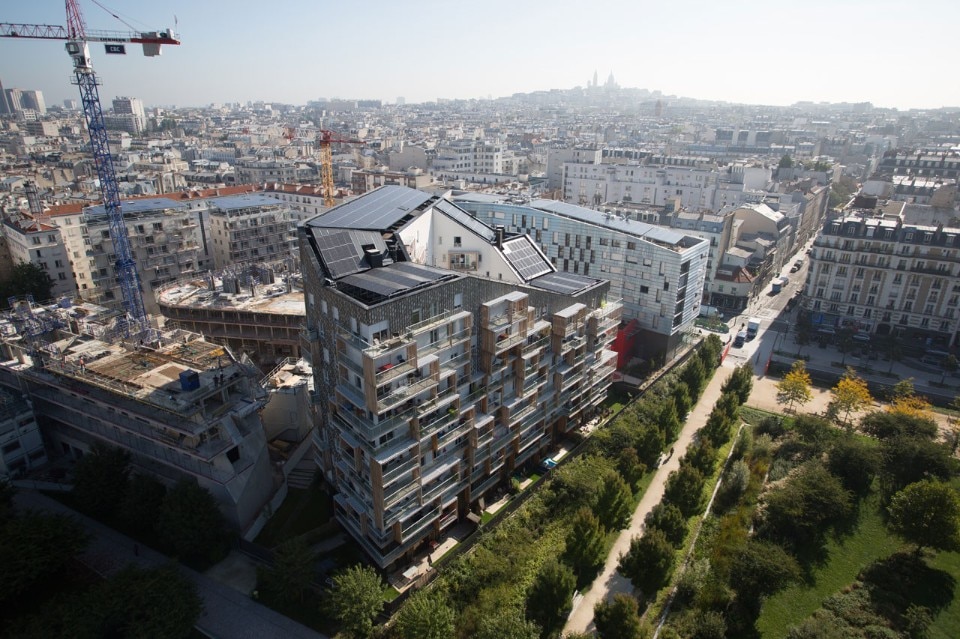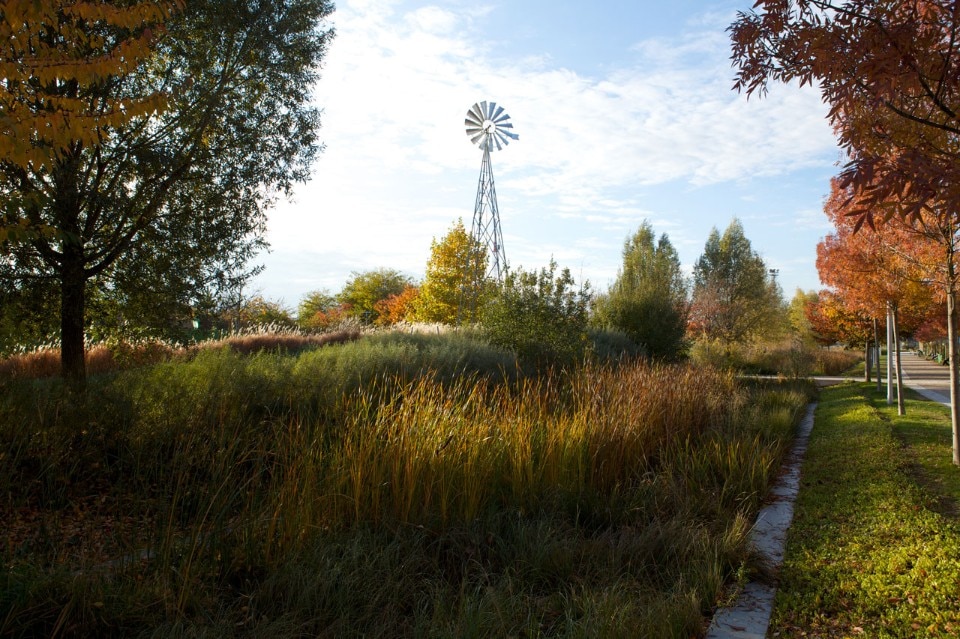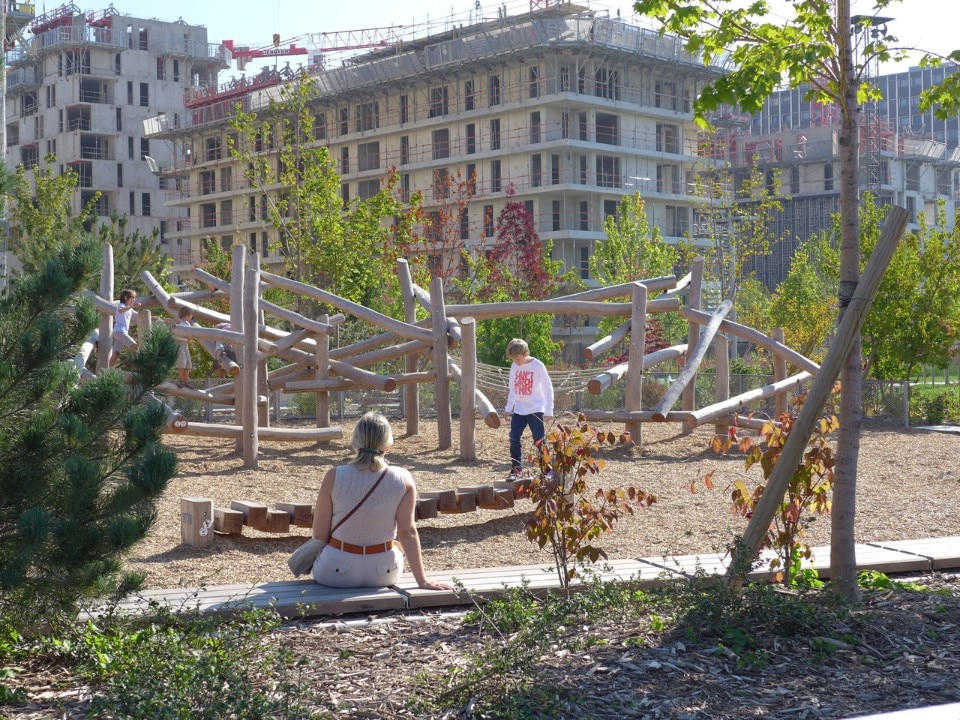It’s been the biggest construction site in Paris for a few years now. The context involves the transformation of the Batignolles railway hub, which was built in the northwest of the city on France’s first rail line, and steadily fell into disuse during the 1970s. In 2003, the City Council announced a competition to redevelop this public site covering over 50 hectares, and the commission was awarded to a group composed of the city planner François Grether, the landscape architect Jacqueline Osty and the engineering firm OGI. In the phase of defining the project, a proposal emerged to turn the site into an athletes’ village as part of Paris’s unsuccessful bid to host the 2012 Summer Olympics. Although the dossier failed to convince the Olympic Committee, Paris nonetheless went ahead with its plan to transform Clichy-Batignolles from a logistics centre into an experimental area for new urban quality. The outstanding environmental aims envisaged for the Olympic bid – a zero-emissions district – became the cornerstone for the creation of a new-generation ZAC (or Zone d’aménagement concerté): a neighbourhood where the objective of climatic readjustment coincides with the drive towards social redistribution.
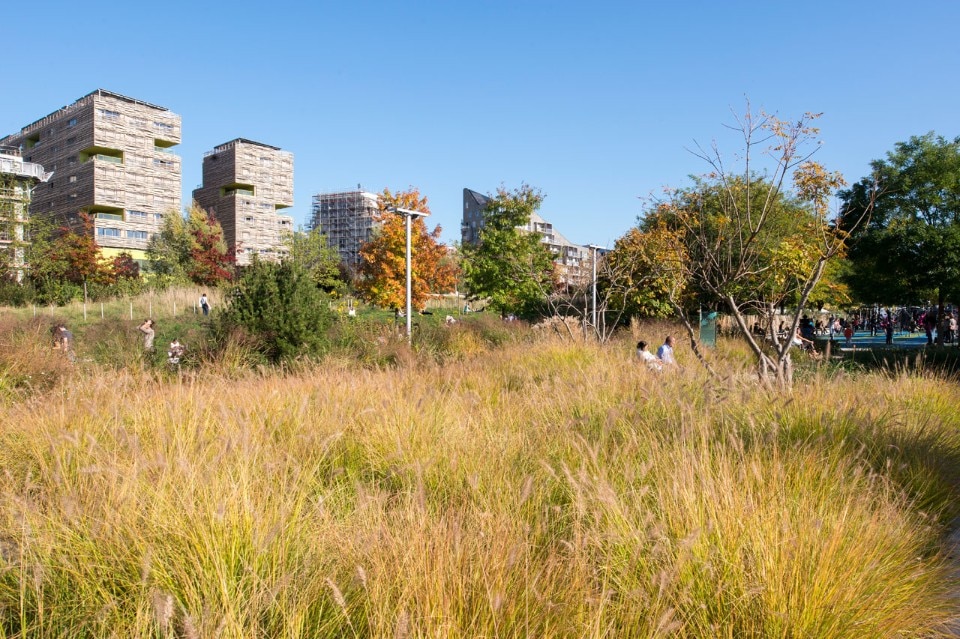
The area presents two main characteristics: a disconnection between the various zones, which are separated by the tracks of the ex-railway hub, and one of the highest population densities in Paris (287 inhabitants per hectare compared to an average of 210). This latter factor is also compounded by a scarcer availability of green spaces (1 square metre per inhabitant against an average of 2.3). In response to these aspects, right from the start the project by Grether, Osty and OGI proposed a large park as an element of cohesion between the different districts. Around the park – which has 14 entrances and a series of paths that extend the existing roads – 27 lots outline a built-up perimeter that is dense but permeable to vegetation, high-rise yet varied, and characterised by at least three strategic choices.
The first choice concerns the range of functions. The project not only includes houses, offices, shops, administrative and recreational structures, schools and medical centres, but also exceptional urban services such as the new law courts, an innovative waste-management centre and industrial activities such as concrete production. The second strategic choice regards design diversity, with a master plan that provides for a considerable variety of building types. Furthermore, Paris Batignolles Aménagement, the public firm responsible for the planning process, enacted a complex competition procedure to identify 20 real-estate promoters (to whom the land is sold while retaining organisational control) and a considerable number of architects. As a result, the building site is seeing the contribution of French architects and international studios, including Avenier Cornejo and Gausa+Raveau, Lan Architects, Périphérique, Francis Soler and the couples Aires Mateus/AAVP, Christian Biecher/Mad, TVK/Tolila + Gilliland, and Baumschlager Eberle/Scape, to name just a few.
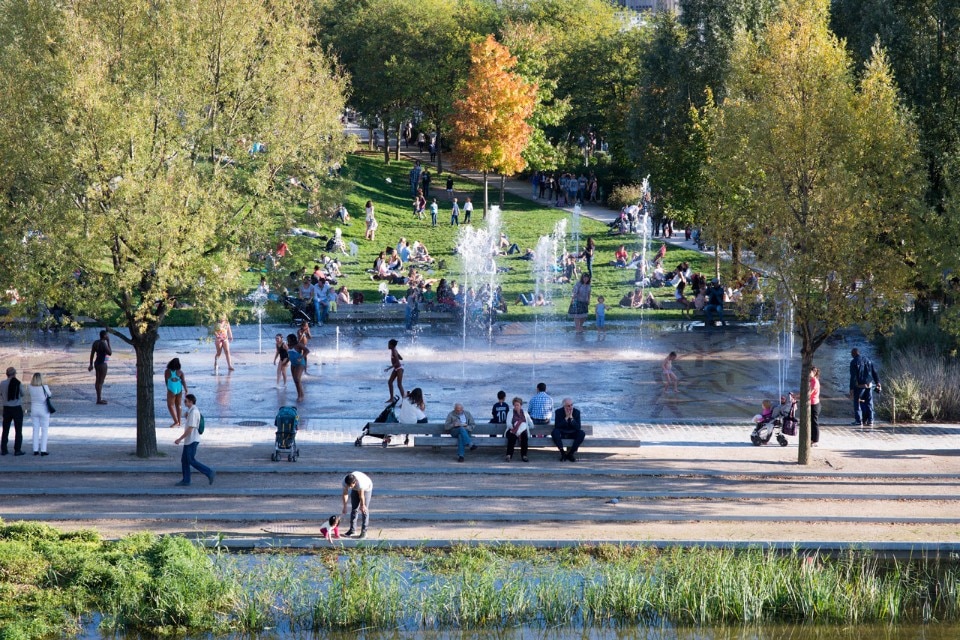
To optimise land use, the decision was made to locate public functions at the base of certain buildings and to raise the height limit for residential constructions from the city’s regulation 37 metres to 50 metres. The district would thus receive new visual prominence over and towards the city. However, there are so many innovative choices that it’s hard to describe this area’s transformation without reducing it to a list of names, numbers and keywords. Strolling around the extraordinary Martin Luther King Park, once can’t help being struck by its well-kept yet wild appearance, where nature is intentionally drafted in to carry out its role as an environmental regulator. The ten-hectare park (along with the 6,500 square metres of private gardens and 16,000 square metres of green roofs) has been conceived as part of a natural infrastructure, forming a network that supports biodiversity and the city’s resilience, contrasting the urban heat-island phenomenon.
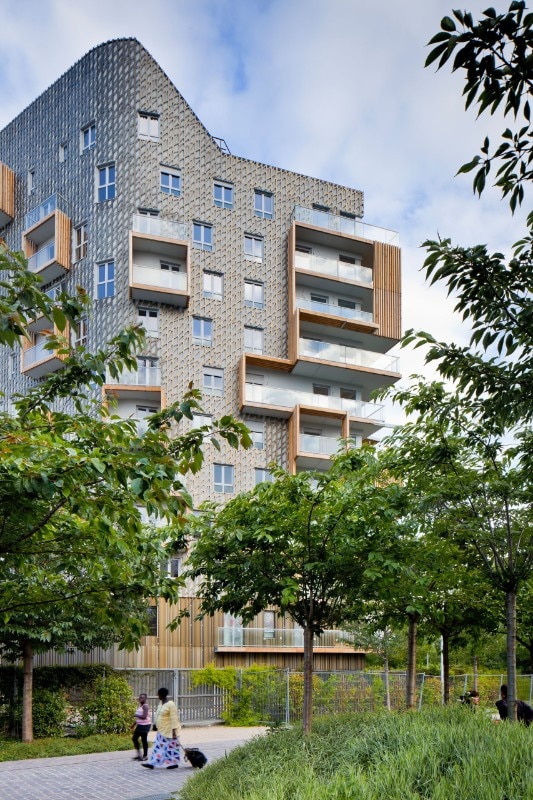
As well as a large recreational zone with water fountains, the park contains four large pools or biotopes, plus a system of wet areas for rainwater collection and purification. This water is stored in an underground reservoir and reused for irrigation (thanks to a wind-energy-powered pump), and also feeds the wet areas during dryer periods. With this system, there is a halving of the amount of rainwater on public terrain that ends up in the sewers, and almost half of the park’s irrigation is supplied by rainwater. The project’s choices are equally far-sighted from an energy prospective. In fact, here the city has opted to bring forward the national standards for 2020, i.e. zero emissions (in the operational phase).
Moreover, while private car parking has been minimised, the City Council has planned the extension of a tramway and is helping to finance the expansion of metro line 14. Here, carbon-footprint reduction is clearly an active design factor for a brand-new piece of city. Walking around the park’s paths and its numerous playgrounds, and gazing at the attractive facades of its surrounding buildings, one might think this city district is unaffordable for most. Yet social diversity and inclusiveness lie at the core of the project: 50 per cent of the 3,400 apartments has been dedicated to social housing, 20 per cent is subject to price ceilings, and 30 per cent is available at market prices. Indeed, the exceptional quality of this building site is best conveyed by the fact that the park was the first part delivered to the city.


